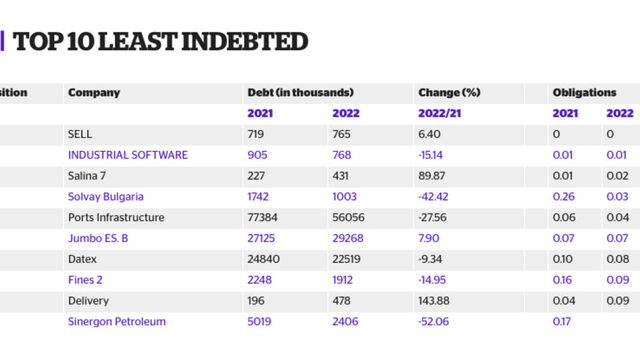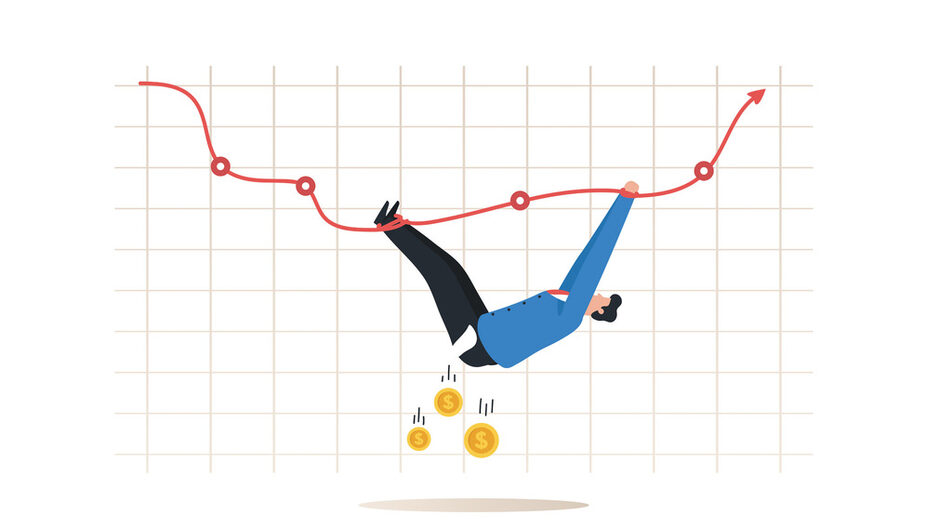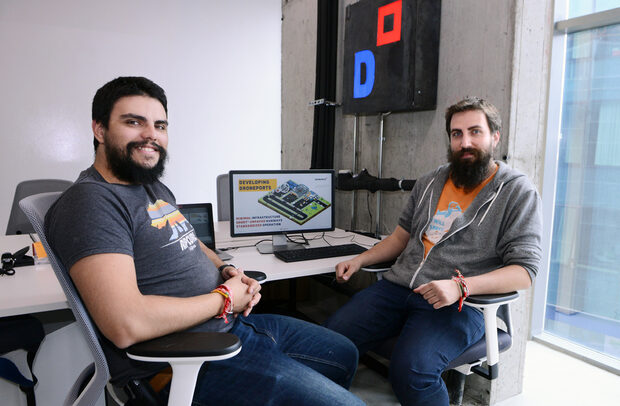Finance is full of numbers and formulas, but there are also many parameters for which no golden rule exists. In this case it is management style and intuition that make it or break it. One such decision is how much debt financing a company should use.
If the number is closer to zero, the business is less risky: you can't go bankrupt if there are no creditors to claim it. However, this may also mean missed opportunities for investment, optimization of working capital and, accordingly, the danger of a competitor taking over the market share of this business.
Striking the right balance varies for each sector. In general, as can be seen from the biggest local businesses, the average ratio of liabilities to assets remains close to 50%, and for the same sample of companies, it has slightly shrunk compared to 2021.
This is influenced by the strong performance of the economy in 2022. The recovery from the shock of the war in Ukraine was quick, and the negative scenarios of energy shortages in Europe did not materialize. Not only was GDP growth revised upwards, but for many businesses the year brought good profits and capital appreciation. At the same time, rising interest rates made it relatively unprofitable to take out new loans, and the focus shifted towards repaying existing loans rather than taking out new ones.
The champions: close to zero
Companies that do not use borrowed resources are diverse. Often at the top of the ranking are simply intermediate holding companies that have almost no staff, activities and expenses of their own, but receive huge income from dividends. This is also the case with this year's number 1 - SELL, a company that directly owns Ellatzite-Med mining company.
The other type of business that usually does not need debt financing are non-manufacturing sectors where there is no need for substantial assets, yet record a high rate of profit. Second in the ranking is Industrial Software - a company that offers automation solutions with a worldwide market. In 2022 it reports revenue of BGN 88 million (appoximately EUR 44 million) and a profit of nearly BGN 41 million.

Last year's leader in terms of low debt is now ranking third. Salina 7 is a distributor of fuels, oils and batteries, which mainly serves large corporate clients. The company is small in terms of staff and is really more of a middleman, stepping on good relationships and service, and thus lacks the need to lock up a lot of funds in inventory. Other retailers in the ranking include Jumbo toy retail chain and Fantastico supermarkets.
The other end of the spectrum
Usually highly indebted companies with a debt-to-asset ratio close to and above 100% portend servicing problems. But that's not always the case. Metropolitan, the operator of Sofia metro, reports BGN 0.7 million equity capital yet it has over BGN 3 billion in liabilities. However, this is not so much a question of real loans, since the metro has been built mostly using European funds, and a large part of this amount in the company's reports is classified as grants provided by the state.
No companies reported negative equity for 2022, but this may also be due to a collection bias, as companies with more troubled metrics are generally less willing to share their financial information.
Among the most indebted companies are other state-owned businesses where there are distortions. Bulgarian Post is chronically at a loss because of the social functions it performs, despite compensation from the state budget. Motorway construction business Automagistrali is the company through which a lot of funds passed in recent years, prompting scandals surrounding in-house procurement. There, the huge liabilities are mainly advances from road infrastructure agency API for road construction, which it in turn has subcontracted to construction companies, bypassing the requirements of the Public Procurement Law.
Energy shifts
The largest reductions in debt are seen in electricity companies from the Bulgarian Energy Holding structure, and in both cases it is primarily a question of covering claims from the parent company.
At national electricity company NEK, the decrease amounts to almost BGN 1.5 billion, with the debt-to-assets ratio improving from 68% to 46%. At Maritsa-Iztok 2 thermal power plant, the repaid liabilities amount to nearly BGN 1 billion, and the ratio has decreased from 81% to 27%. In both cases, the current environment of windfall profits due to the surge in the price of electricity allows for these one-time effects.
The biggest jump in liabilities is also in a BEH company - public gas supplier Bulgargaz, conditioned by the sharply changed environment due to the war in Ukraine and the suspension of gas deliveries from Russia. The result is a BGN 1.6 billion increase in supplier liabilities to cover the growth of current assets, which come in the form of loans from the state and the parent company, as well as growth in current liabilities to suppliers.
Monetary tightening
In 2023, companies with higher levels of debt will likely begin to feel its burden. In the case of bank loans for businesses, the effect of the tightening of the European Central Bank's monetary policy is already clearly visible, with interest rates rising. Many of the corporate loans are floating-rate and tied to Euribor, so carryover is relatively quick.
Thus, for 2023, many companies will have to anticipate much more substantial financial costs compared to those they were used to in the years of cheap and abundant credit. For some of them, this could mean a significant additional pressure on operational performance and might drain profits, even more so if the forecasts for a slowdown in the Bulgarian economy and foreign demand materialize.
Bank data as of mid-2023 however shows no significant stress in loan servicing and the share of bad loans continues to shrink. What is clearly visible is a cooling of credit growth and a tightening of requirements for borrowers.
Finance is full of numbers and formulas, but there are also many parameters for which no golden rule exists. In this case it is management style and intuition that make it or break it. One such decision is how much debt financing a company should use.
If the number is closer to zero, the business is less risky: you can't go bankrupt if there are no creditors to claim it. However, this may also mean missed opportunities for investment, optimization of working capital and, accordingly, the danger of a competitor taking over the market share of this business.












